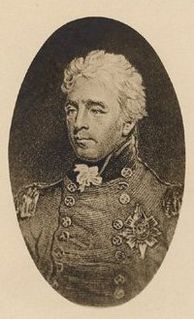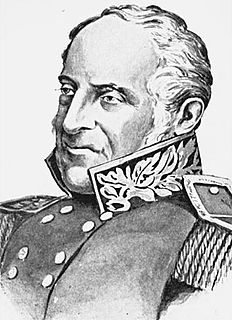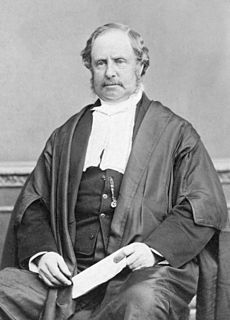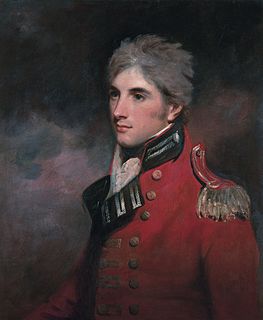General Hector William Munro (1769–1821) was the British Governor of Trinidad from 27 September 1811 to 14 June 1813.

The British people, or the Britons, are the citizens of the United Kingdom of Great Britain and Northern Ireland, the British Overseas Territories, and the Crown dependencies. British nationality law governs modern British citizenship and nationality, which can be acquired, for instance, by descent from British nationals. When used in a historical context, "British" or "Britons" can refer to the Celtic Britons, the indigenous inhabitants of Great Britain and Brittany, whose surviving members are the modern Welsh people, Cornish people, and Bretons. It may also refer to citizens of the former British Empire.
William Hector was the second son of the surgeon, Dr George Munro of Auchinbowie, one of the distinguished family of Munro of Auchinbowie.

The Munros of Auchinbowie are a distinguished branch of the Scottish, highland Clan Munro. From this family three Professors of Anatomy at the University of Edinburgh, Scotland were produced, as well as several other doctors and military officers.
On 30 July 1778, Munro joined the 51st Regiment of Foot as an ensign. He was appointed as a lieutenant on 9 February 1780. He became a captain on 31 March 1788. He exchanged into the 42nd Royal Highlanders, Black Watch, on 8 September 1789.
The 51st Regiment of Foot was a British Army line infantry regiment, raised in 1755. Under the Childers Reforms it amalgamated with the 105th Regiment of Foot to form the King's Own Yorkshire Light Infantry in 1881.

The 42nd Regiment of Foot was a Scottish infantry regiment in the British Army also known as the Black Watch. Originally titled Crawford's Highlanders or the Highland Regiment and numbered 43rd in the line, in 1748, on the disbanding of Oglethorpe's Regiment of Foot, they were renumbered 42nd and in 1751 formally titled the 42nd (Highland) Regiment of Foot. The 42nd Regiment was one of the first three Highland Regiments to fight in North America. In 1881 the regiment was named The Royal Highland Regiment , being officially redesignated The Black Watch in 1931. In 2006 the Black Watch became part of the Royal Regiment of Scotland.
Having served with distinction in each of the above ranks at Menorca, and subsequently in the campaigns in Flanders, he was on 2 September 1794, promoted to his majority in the 42nd, and on 15 November following was appointed lieutenant-colonel in the Caithness Legion. On 1 January 1801, he was made brevet colonel, and was afterwards appointed brigadier-general on the Staff in Ireland and Great Britain. In March 1804, he received the appointment of Inspecting Field Officer of Volunteers. On 25 April 1808 he became major-general and was subsequently placed on the Staff of the West Indies and in command of Barbados, Surinam, and other places there. He was also Governor of Trinidad. On 4 June 1813, he was made lieutenant general, and in 1816, was appointed Doctor of Letters for Dorset.
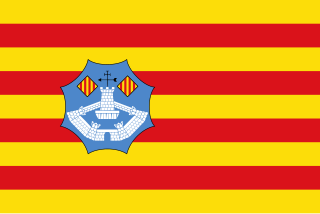
Menorca or Minorca is one of the Balearic Islands located in the Mediterranean Sea belonging to Spain. Its name derives from its size, contrasting it with nearby Majorca.

Flanders is the Dutch-speaking northern portion of Belgium and one of the communities, regions and language areas of Belgium. However, there are several overlapping definitions, including ones related to culture, language, politics and history, and sometimes involving neighbouring countries. The demonym associated with Flanders is Fleming, while the corresponding adjective is Flemish. The official capital of Flanders is Brussels, although the Brussels Capital Region has an independent regional government, and the government of Flanders only oversees the community aspects of Flanders life in Brussels such as (Flemish) culture and education.

Barbados is an island country in the Lesser Antilles of the West Indies, in the Caribbean region of North America. It is 34 kilometres in length and up to 23 km (14 mi) in width, covering an area of 432 km2 (167 sq mi). It is situated in the western area of the North Atlantic and 100 km (62 mi) east of the Windward Islands and the Caribbean Sea; therein, Barbados is east of the Windwards, part of the Lesser Antilles, roughly at 13°N of the equator. It is about 168 km (104 mi) east of both the countries of Saint Lucia and Saint Vincent and the Grenadines and 400 km (250 mi) north-east of Trinidad and Tobago. Barbados is outside the principal Atlantic hurricane belt. Its capital and largest city is Bridgetown.
He married in 1796, Philadelphia, eldest daughter and co-heiress of Capt. Edmund Bower RN of Edmondsham in Dorset, from whom he acquired that property. They had three sons and four daughters. He died at Bath in Somerset on 3 January 1821 and was succeeded in his estates by his eldest son, Hector William Bower Munro.

Edmondsham is a village in the county of Dorset in southern England. It is situated two miles north west of Verwood and ten miles north of Bournemouth. It is sited near the source of a small stream which flows into the River Allen. In the 2001 Census it had a population of 200. The surrounding countryside is well-wooded. Edmonsham House was built in 1589, and in 1905 was described by Sir Frederick Treves as "grey with age" and hence "like a mist in the wood". Edmonsham House Gardens are open to the public.
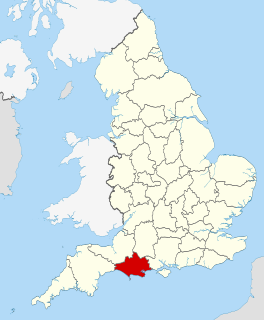
Dorset is a county in South West England on the English Channel coast. The ceremonial county comprises the unitary authority areas of Bournemouth, Christchurch and Poole and Dorset. Covering an area of 2,653 square kilometres (1,024 sq mi), Dorset borders Devon to the west, Somerset to the north-west, Wiltshire to the north-east, and Hampshire to the east. The county town is Dorchester which is in the south. After the reorganisation of local government in 1974 the county's border was extended eastward to incorporate the Hampshire towns of Bournemouth and Christchurch. Around half of the population lives in the South East Dorset conurbation, while the rest of the county is largely rural with a low population density.

Bath is the largest city in the ceremonial county of Somerset, England, known for its Roman-built baths. In 2011, the population was 88,859. Bath is in the valley of the River Avon, 97 miles (156 km) west of London and 11 miles (18 km) south-east of Bristol. The city became a World Heritage site in 1987.
